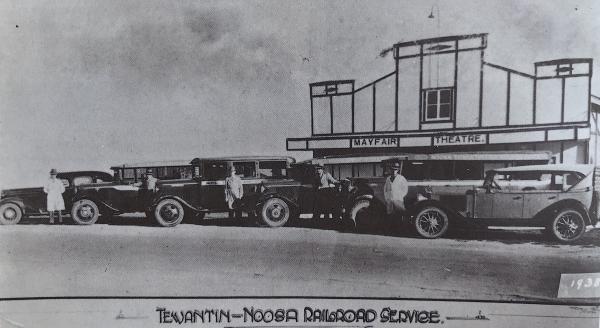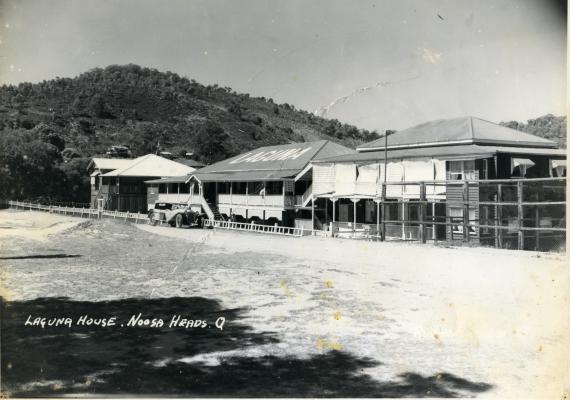Unless you’re in the market for a car wash, a dog wash or a new car, Lionel Donovan Drive is one of the most boring streets in Noosaville, although not one of the cheapest. A commercial block will set you back a few million.
Still, this writer likes to imagine old Lionel, one of the Noosa business community’s more colourful characters, ranting from his grave at our modern city fathers: “Is this the best you could do?”
Lionel was the son of John and Eliza Donovan who, along with the Hay and Parkyn families, drove the coastal economy of Noosa Shire in the early 20th century. John bought the Bainbridge Guest House on Hastings Street in 1906, renovated, extended and renamed it Laguna House, which became the dominant Noosa Heads accommodation for the next half-century. Eliza, an excellent chef and hostess, was Noosa’s first grande dame.
Next, the Donovan’s bought the Royal Mail Hotel in Tewantin, turning the former Cobb and Co coach stop back into a staging post for modern tourists. From his early teens, Lionel, a motor tragic, was assigned the duty of driving a family tourer to Cooroy to pick up Laguna House guests off the Brisbane train.
By 1927 the connections were impeccable: It took approximately six hours to make the 150-kilometre journey from Brisbane to Noosa Heads, but it could be done in one day, barring train delays. Travellers would catch the 8.10am North Coast Mail to Cooroy, arriving just after midday when they would be met by Lionel for the 45-minute drive down the newly-sealed road to Tewantin, arriving at the Royal Mail in time for luncheon. After lunch, the Miss Tewantin would pick them up from Parkyn’s Jetty for the leisurely cruise to their final destination at Noosa Heads, Laguna House. In this way the Donovans had you coming, going, and in between, but nobody complained.
The opening of the new Doonella and Weyba bridges and the “Noosa Beach Highway” in 1929 closed that chapter, but again Lionel was in the thick of the action. With more than a thousand spectators – the biggest crowd ever seen in Tewantin – gathered along Pelican Street and the river banks to witness the biggest occasion in the history of Noosa Shire, a sudden commotion broke out at the front of the line. Only those in the front row or at a higher vantage point could see what happened next, but two young men suddenly appeared at the approach to the bridge and lifted the chain high enough to allow Lionel Donovan to drive his Chevy through, hood down and windscreen folded flat.
A huge cheer went up as the two accomplices – one of them identified as 16-year-old Howard Parkyn, son of the prominent businessman who owned the adjacent wharf – dropped the chain and clambered into the car as Lionel accelerated over the bridge, before pulling up on the other side of the river at Goodchap’s Estate. The two policemen in charge of crowd control and the four traffic controllers employed by the Council looked on helplessly, before giving up and joining in with the mirth of the crowd.
During the 1930s Lionel Donovan expanded his fleet of luxury limousines into a thriving business, the Tewantin-Noosa Railroad Service, and built and operated Tewantin’s first talkies cinema, the Mayfair. After World War II he added a fleet of buses to his interests. By now a prominent and respected business figure in Noosa, Lionel kept his larrikin streak. In 1948, sick of delays from the Main Roads Commission in grading and maintaining the road from Tewantin to Noosa Heads, he took matters into his own hands.
The Brisbane Telegraph reported: “A Tewantin business man, Mr. Lionel Donovan, who owns and conducts a fleet of 4 motor buses, has solved the problem of keeping the Gympie Terrace-Noosa Heads main road in trafficable order. He has bought a grader to do the job himself. The Noosa Shire Council has given Mr. Donovan permission to use the grader, provided the work is done under the Main Roads Commission’s supervision.”
He didn’t have to grade the road for too long, but Lionel Donovan remained active in Noosa business until the 1960s.








